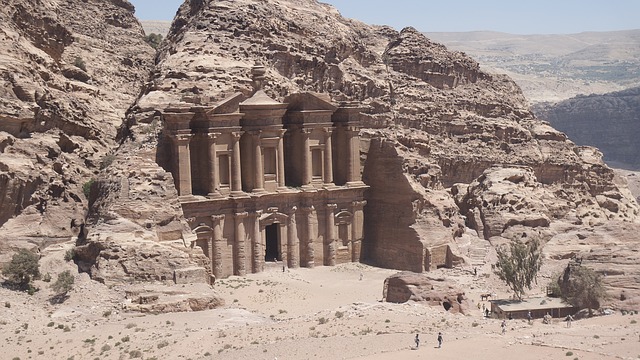Petra Facts
Below are some of the facts about Petra:
- The estimated date of establishment of Petra is 312 B.C., but human settlements had started around the historical city at around the period between 1550 and 1292 BC.
- Petra has been selected as one of the top places to see before you die among the listed 28 sites by the Smithsonian magazine.
- In the year 1985, UNESCO declared Petra as a World Heritage site. Also the rock carved city was declared as one of the most precious man-made cultural properties.
- In the early days, a water conduit system was built in Petra to serve its population.
- The city is fully made of rock, out of which half is carved inside rock and the rest is made with rock.
- The Bible mentions Petra. The words used for referring to the area are ‘the cleft in the rock’, because the entrance to Petra is like that.
- Entrance to the city of Petra is in between two cliffs which are 80 km long. And the path between them is very narrow, looks very queer and interesting, and extends to 1 km between the cliffs.
- Petra is also called the Rose city for the color of the rocks are close to a rosy hue.
- The poet John William Burgon mentioned Petra in his famous poem which fetched him the Newdigate prize.
- Petra was important for several trades like the silk trade, caravan trade, spices etc. For all such trading the location of Petra amidst India, China, Rome, Greece, Egypt, Southern Arabia, and Syria was very favorable.
- The word Petra came from the Greek word which means rock.
- Petra consists of 800 structures inside. There is a mausoleum inside called Pharoah’s Treasure which is the most famous.
- Only 15% of Petra has been discovered and studied by the archaeologists. The rest is still waiting to be explored.
- In the second and third centuries Petra fell in the Roman declared province of Arabia Petraea.
- The desert around Petra was once a lavish Rose garden and there was no scarcity of water. That is why Petra was then built at that location.
- The water conduit system in Petra was good enough to support the lives of the 30,000 inhabitants of the city as well as the Rose gardens amidst the desert around the city.
- In 363 B.C., an earthquake occurred which destroyed the city heavily and also affected the water conduit system.
- Many treasures from Petra got stolen by robber through the years as the structural strength of the walls and rock formations weakened with time.
